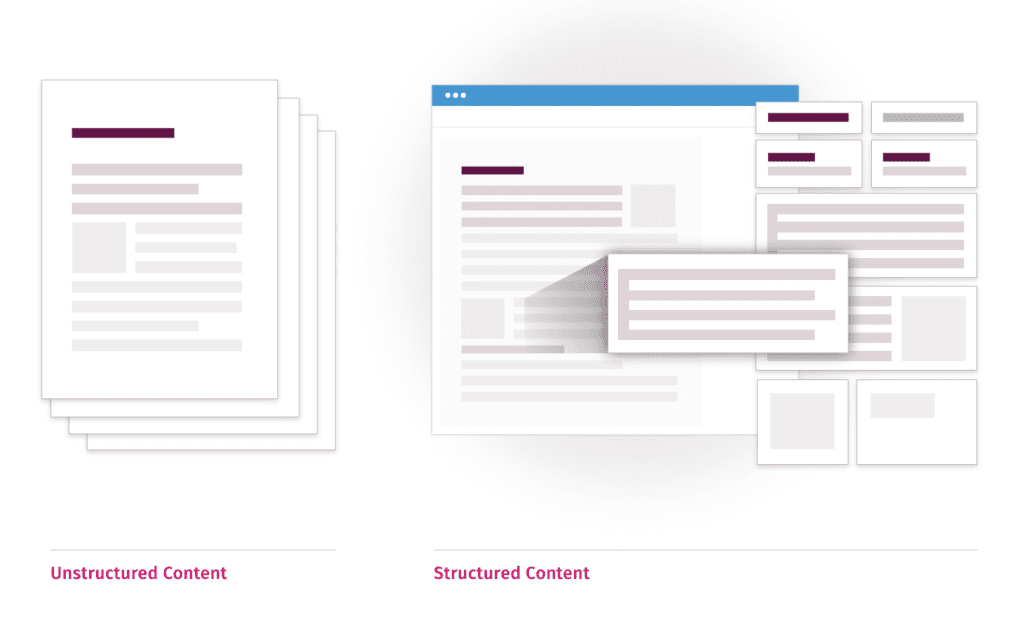In today’s digital age, the way we manage and utilize information has evolved dramatically. Conventionally, document content is unstructured, with text, figures, and tables that authors can freely arrange in the way they want to. By structuring content, we can shift from a document-based to a content and data-based approach. But what exactly is structured content, and why is it becoming increasingly important in various industries?
What is structured content?
Structured content refers to information organized in a consistent and predictable manner, often enriched with metadata. While XML is a familiar storage format, structured content isn’t limited to it. Today, we also discuss fragmented or componentized data—information segmented into smaller, metadata-enriched components. These components can be referenced across multiple publications, eliminating the need for repetitive copying and pasting.

Key benefits of structured content
- Accuracy: Integration with external data sources automates document creation. For instance, pharmaceutical companies can directly pull data from laboratory systems, ensuring precision.
- Speed: Smart templates automatically manage content variations based on predefined business rules, streamlining content creation.
- Compliance: The “write once, reuse everywhere” principle ensures consistency across documents. This is especially crucial for regulatory submissions in different countries, where discrepancies can lead to significant issues.
In the pharmaceutical industry for example, where precision is non-negotiable, traditional methods like manual data copying are not just tedious but error-prone. Structured content addresses these challenges head-on.
Structured content in regulated industries
RWS has produced an insightful explainer video highlighting the importance of structured content in regulated sectors, including life sciences, pharma, and finance. This video not only underscores the challenges but also the advantages of structured content.
The intersection of structured content and AI
Structured content plays a pivotal role in the realm of artificial intelligence. Large Language Models (LLMs) can predict potential answers more accurately when provided with structured context. For instance, structured data can prevent the inadvertent translation of personal names, ensuring the integrity of the generated content.

Customer Success Manager at Fonto – Passionate runner and Dad
